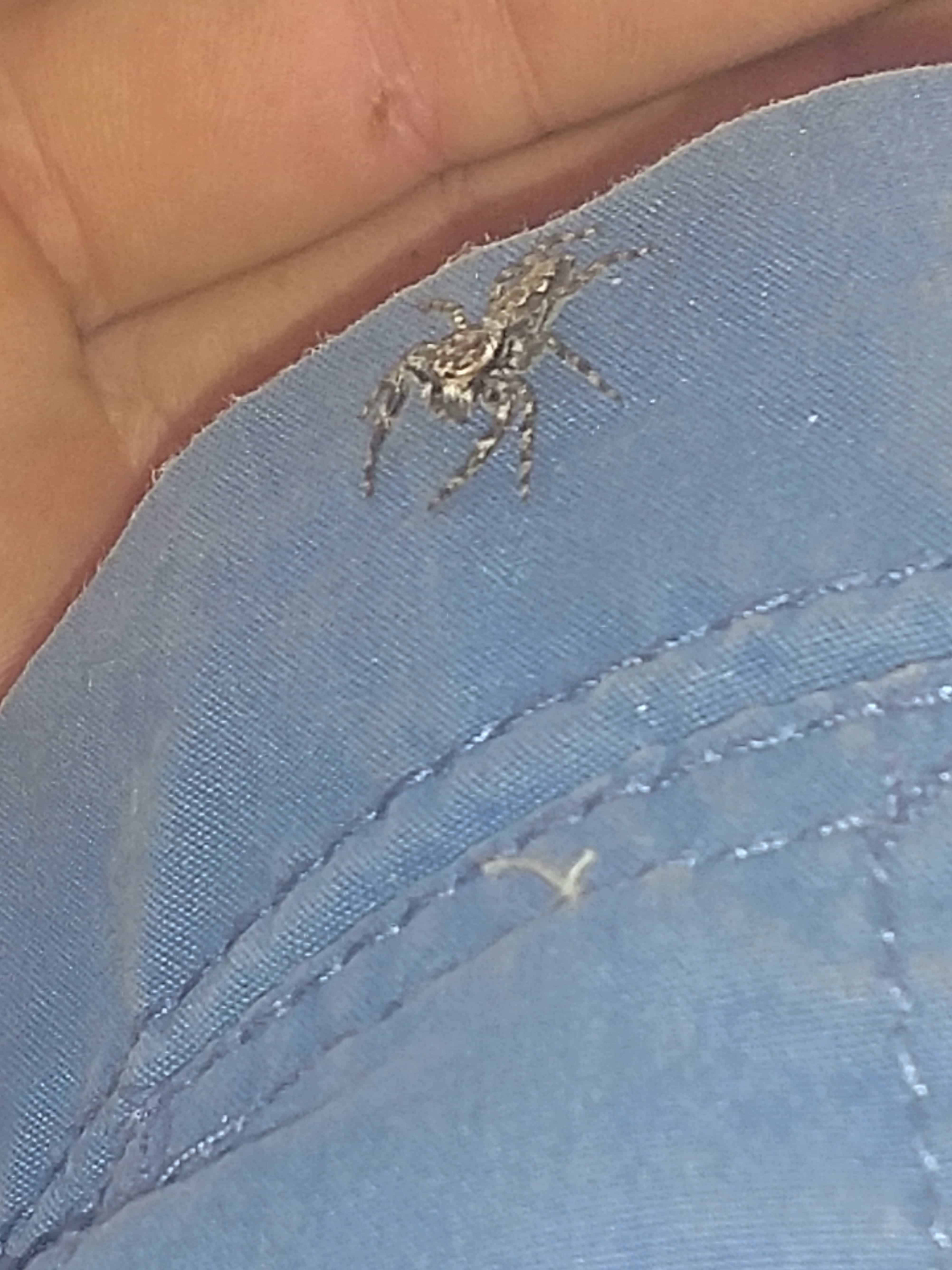
Comments & ID Thoughts
I've seen these in this part of Arkansas all of my life. I used to think they were a type of wolf spider, but I am now leaning more towards the bold jumping spider. I've seen them grow too nearly an inch in length. I've seen some that were black with orange, grey and black, grey and white, black and white, and either solid with an abdominal spot or striped. They are non-aggressive and don't seem to mind when I urge them onto my hand for a closer look. I see them frequently around the outside of my house, occasionally inside, and in the yards, fields, and forests nearby. They do not spin webs, rather hunting and pouncing on their prey, but use the silk they produce as a sort of a safety line, securing it behind themselves frequently. I believe they do wrap their prey in the silk after they catch it, but I can't say for sure I've witnessed this personally. I took this photo about fifteen minutes ago and I think it's still nearby. I relocated it from my leg to a nearby post so I didn't lose track and accidentally squish it. These are the only kinds of spider I don't absolutely despise...
- Submitted by:

- Submitted: Jul 14, 2018
- Photographed: Jul 14, 2018
- Spider: Unidentified
- Location: Norman , Arkansas, United States
- Spotted Outdoors: Man-made structure (building wall, fences, etc.),Low foliage (shrubs, herbs, garden, excluding flowers),High foliage (includes trees and tree trunks),Ground layer (leaf litter, dirt, grass, etc),Open field, pasture, prairie, grassland,Forest
- Found in web?: No
- Attributes:
Platycryptus undatus is mostly likely what is pictured. There may be multiple species of jumping spider near your home by the descriptions of them. Hi there! You seem to have a Tan Jumping Spider, these robust little spiders enjoy foliage and arboreal environments, but can and will thrive in man made areas as well. Note the grey “mustache” hairs on the jaw at the front of the spider above the fangs as well as the pleated mottling along the abdomen and thorax, these are both identifiers for the species. Females typically have a grey to stark white patch of hair… Read more »
I think you’re on to something. I looked up the Latin name you suggested and it matches what I’ve noticed. I found another, similar, spider in the garden soon after I posted this picture. It was about a third to a quarter the size, and solid black with the orange spot. The second one didn’t seem to have those mustache marks, but I couldn’t get my phone camera to focus on the spider instead of the ground behind it. That’s why my hand is in the above photo, to force the camera to focus on the foreground. “Approachable” I like… Read more »
The solid black spider with an orange dot sounds like a Phidippus audax, but without a photo I could be wrong.